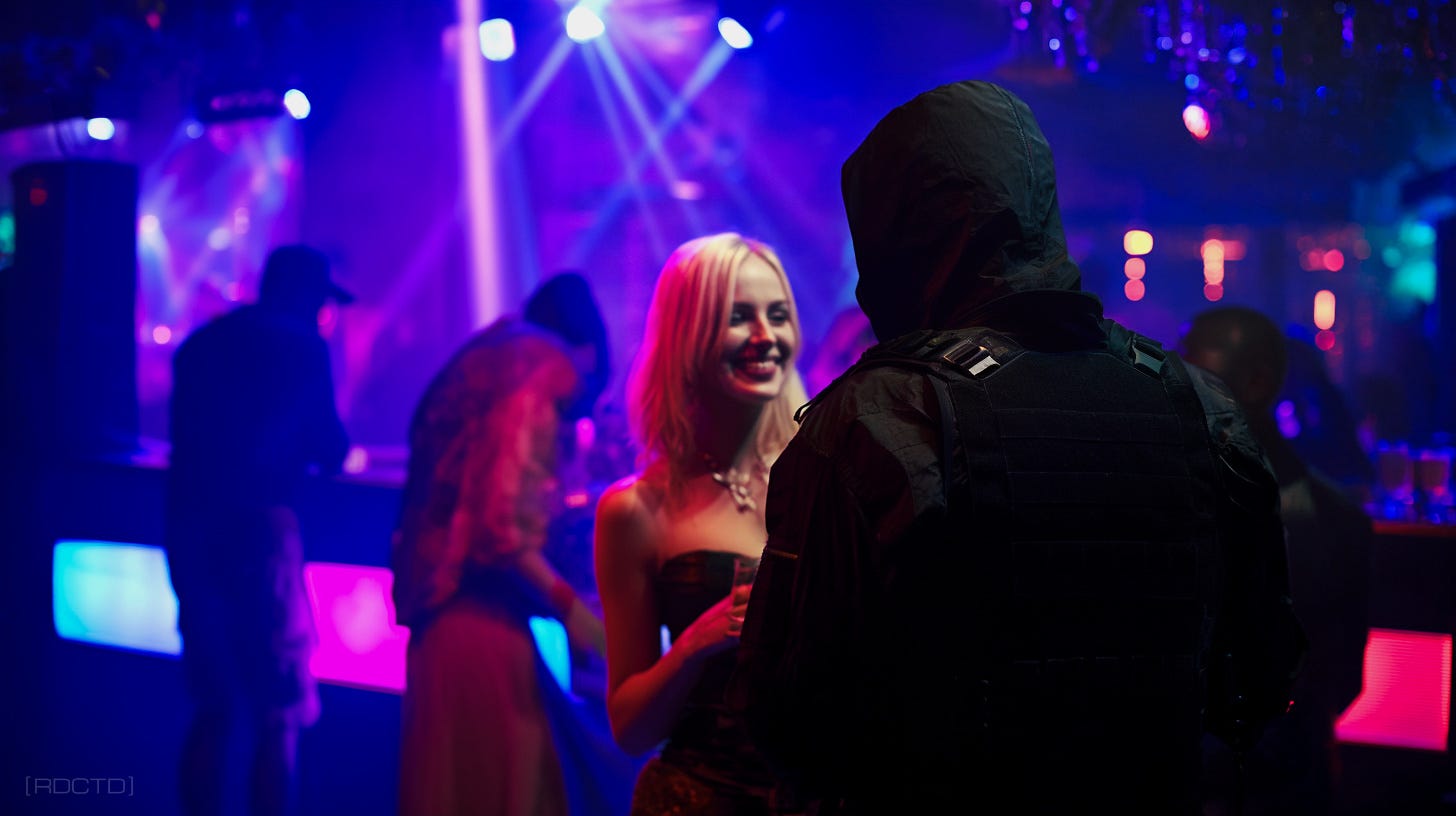The Lie Behind The Smile (skillset)
CIA Lesson in Deception Detection
The ability to see past a liar’s smile is a skill of perception, piercing through a deceiver’s most disarming mask - where others are blinded by charm and calm.
The tradecraft of detecting the lie behind the smile is a refined form of deception recognition, one of the most fundamental of the communicational craft. Covert operatives are trained to see a smile as a mask a deceiver wears, precisely because it’s socially neutralizing.
We’re conditioned to interpret a smile as a sign of honesty, trustworthiness, and lack of threat. This instinct creates a vulnerability that adversaries exploit. A liar knows a smile draws attention away from inconsistencies in their words or behavior. To counter this, an operative must detach from that instinctive comfort and instead understand the mechanics of the smile itself.
A smile is the oldest camouflage… polished long before language or the word “lie” existed, perfected to conceal intent.
The Anatomy of a False Smile
A genuine smile, aka the Duchenne smile, is marked by the coordinated activation of multiple facial muscles - specifically, the orbicularis oculi muscles around the eyes and the zygomaticus major muscles that pull the corners of the mouth upward.
This synchrony creates warmth in the eyes, slight crow’s feet at the corners, and a natural lift that radiates authenticity. A deceptive smile, by contrast, tends to isolate itself to the mouth alone. The eyes remain cold, flat, or unresponsive, betraying the lack of genuine emotional engagement.
Operatives are trained to notice this lack of synchronicity, because it reveals control and calculation where spontaneity should exist. In practical terms, when you see the mouth form a smile without any corresponding change in the eyes (squinting, narrowing, or the faint crinkling that signals real joy) you’re witnessing a performance rather than a natural expression.
The difference can be subtle, but even in live field conditions, spotting it is a trainable skill that you can master. Even experienced deceivers struggle to fake the eye involvement convincingly for extended periods, which makes this one of the most reliable cracks in the mask.
A smile that lingers past the moment reveals not joy, but strategy.
Timing and Duration as Indicators
Duration and timing also betray the deceptive smile, often more clearly than the expression itself. A natural smile emerges gradually, with a smooth onset, and fades at a similarly natural pace as the emotion subsides.
By contrast, a smile used to mask a lie tends to appear abruptly, almost as if switched on, and disappears just as sharply the moment it has served its purpose.
In interrogation rooms and during field contacts, operatives are trained to pay close attention not only to whether someone smiles, but to when the smile appears in relation to the conversation.
If the smile is “pasted on” immediately after a denial or potentially incriminating statement, its timing betrays intent. Similarly, if the smile lingers unnaturally long, stretching beyond the emotional weight of the moment, it becomes transparent as camouflage rather than genuine communication.
The unnatural precision - too fast, too sharp, or too rehearsed - signals control instead of authenticity. Over time, operatives learn to recognize that the rhythm of an honest smile is irregular and organic, while the rhythm of a deceptive one is mechanical, revealing the calculation behind the mask.
Every false smile carries strain, the trick is learning where that strain shows.
Cracks in the Mask: Microexpressions
The fleeting, involuntary facial expressions that leak genuine emotion - form the next layer of detection beyond the obvious smile. These expressions often last less than half a second, but they reveal emotions the deceiver is working to conceal.
Even behind a controlled and carefully maintained smile, flashes of contempt, fear, guilt, or anxiety can surface briefly before the mask reasserts itself. Operatives train to catch these microleaks through repetition and conditioning, reviewing slowed video footage until the eye becomes skilled at spotting them in real time.
The focus is never on the smile alone but on the subtle distortions that appear around it, where control slips. A raised lip, a momentary tightening of the jaw, a quick flare of the nostrils, or a flash of tension in the brows all serve as betrayals of the underlying truth.
With enough training, operatives can read these signals even during fast, dynamic interactions, treating them as brief but critical cracks in the facade that expose what the deceiver truly feels. These fleeting cues can be more reliable than words, since they’re produced by the body’s emotional reflexes rather than conscious intent.
Trust the timing of the smile, not the words it accompanies. When the smile appears too quickly, the lie is already in motion.
Context and Incongruity
Contextual alignment is equally important when evaluating the credibility of a smile. A smile that doesn’t fit the tone, content, or emotional weight of the conversation should immediately raise suspicion.
In tradecraft, this is known as incongruity - the mismatch between what’s being expressed verbally and what’s being expressed nonverbally. When someone delivers a denial, offers a partial truth, or attempts a redirection while smiling, operatives assess whether that smile reinforces the words or stands in conflict with them.
If a man claims ignorance of an event yet pairs the denial with a smile, the inconsistency suggests compensation rather than authenticity. The smile is not born of genuine emotional resonance but is instead layered over the statement to soften, distract, or control perception.
This dynamic is a hallmark of deception: the body and words operating at cross-purposes. This mismatch is among the strongest indicators of lying, since authentic communication almost always aligns speech and expression, while falsehoods often fracture that alignment under pressure.
A liar treats the smile as punctuation… periods to end suspicion, commas to buy time. Read it like grammar, not sentiment.
Establishing the Baseline
Operatives are trained to combine all these observations with baseline analysis, the foundation of accurate deception detection:





